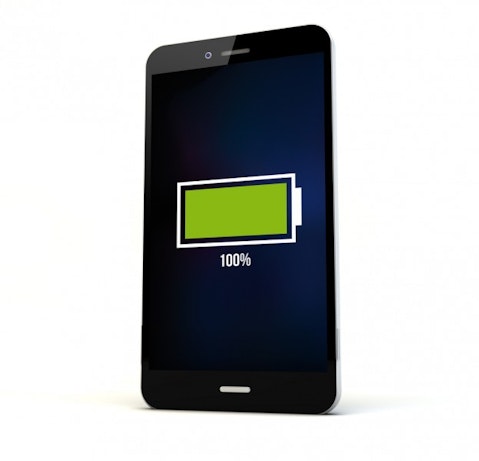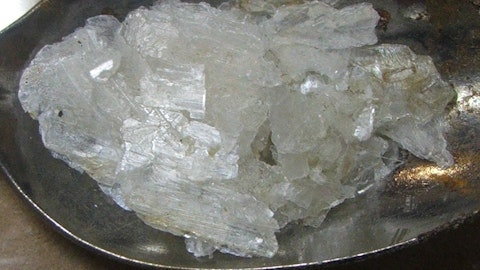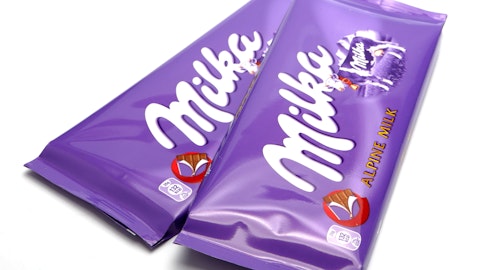You might be thinking that the smartphones with quick charge have one thing in common: a small to medium-sized battery capacity. It may be true that the smaller capacity a battery has, the faster it will charge, but some manufacturers just wouldn’t take that analogy without a fight.
Every day we charge our phones without even wondering how it works, and not knowing that different chargers have different specifications. If you are a part of the 90% of people who have no idea how phone charging works, then you have come to the right place. I won’t give you the technical terms and the highfalutin, snazzy sounding words that drive away non-techies like the plague. So first off, welcome to Insider Monkey’s phone charging 101!

Georgejmclittle/Shutterstock.com
To understand how the 6 fastest-charging smartphones were determined, you need to understand how phone charging works. As we all know, batteries provide the power for our phones to work. We charge this with electricity using our chargers. A charger’s capacity to charge phones is measured in watts. A watt is equal to the charger’s voltage (V) multiplied by its amperes (A). More watts means faster charging times. To increase the watts, you need to either increase the voltage, the amperes, or both. Check your chargers. If you see 5V and 0.5A, then you have a typical USB 2.0 charger. Its wattage is 5V x 0.5A = 2.5 watts. This means that a USB 2.0 charger charges phones at 2.5 watts. Some chargers had an utilized 5V/1A for an output of 5 watts. The advent of bigger batteries meant longer charging times, which also meant a bigger carbon footprint. You might also want to check the 6 most green phones for eco-friendly consumers for that captain planet fan living inside all of us.
With a growing need for more powerful chargers, one particular company literally saw more power equate to more money. In 2012, a new and more powerful charger was introduced by Qualcomm, called Quick Charge 1.0. Again, more watts means faster charging times. This charger operated at 5V/2A, charging phones at 10 watts, a 400% increase from the usual 2.5 watts. Later in 2013, the company introduced the Quick Charge 2.0, which made use of 9V/1.67A chargers, for an output of 15 watts. To put into perspective how fast the 2.0 is, charging a 3300 mAH battery for 30 minutes will give you 12% from a 5V/1A, 30% from the 1.0 and 60% from the 2.0! This is like giving your child transitioning from bicycle trainers to Ducatis in 2 days.
However, Chinese manufacturer Oppo has brought the charging game to a whole new level. Coming up with their own quick-charge technology, the VOOC Flash Charging, short for Voltage Open Loop Multi-Step Constant-Current Charging, their chargers utilize a 5V/4.5A system, providing their smartphones 22.5 watts of power! And this was only the first generation! Their second generation of chargers made use of 5V/5A, giving off 25 watts! I guess their phones have all the power (pun intended).
Another factor is how consistent these chargers are at giving out their advertised wattage. A 25-watt charger won’t matter if it only gave this amount of power for 5 minutes, which makes a 10-watt charger more effective in this case. Chargers have a programmed “down-time”, which means that whenever a phone reaches a certain percentage level, these chargers lay-off the power-giving, reducing wattage gradually, with some chargers giving off only 2 watts when their phones reach 90%.
To find out which are the fastest-charging smartphones, Insider Monkey scoured the web for unofficial test results of how fast our modern-day masters reach 100%. Because they are literally hundreds of smartphones out there, we determined the best-selling smartphones. However, not all best-selling smartphones were included in some tests. Three websites were of great help: GSM Arena, Android Authority, and Tom’s Guide. Smartphones were then ranked by how fast, in minutes, they reached 100%.
Basically, this is a race to 100%. This means that regardless of the battery capacity, whoever reaches 100% wins. Reaching 30%, 50% or 75% battery charge is a different story, and more so if battery capacity is taken into consideration. We may (or may not) release those results. Depends on our meeting. And the weather. And our moods.
Less talk, more results. We now present you with the smartphones with quick charge: fastest to recharge from 0 to 100!





